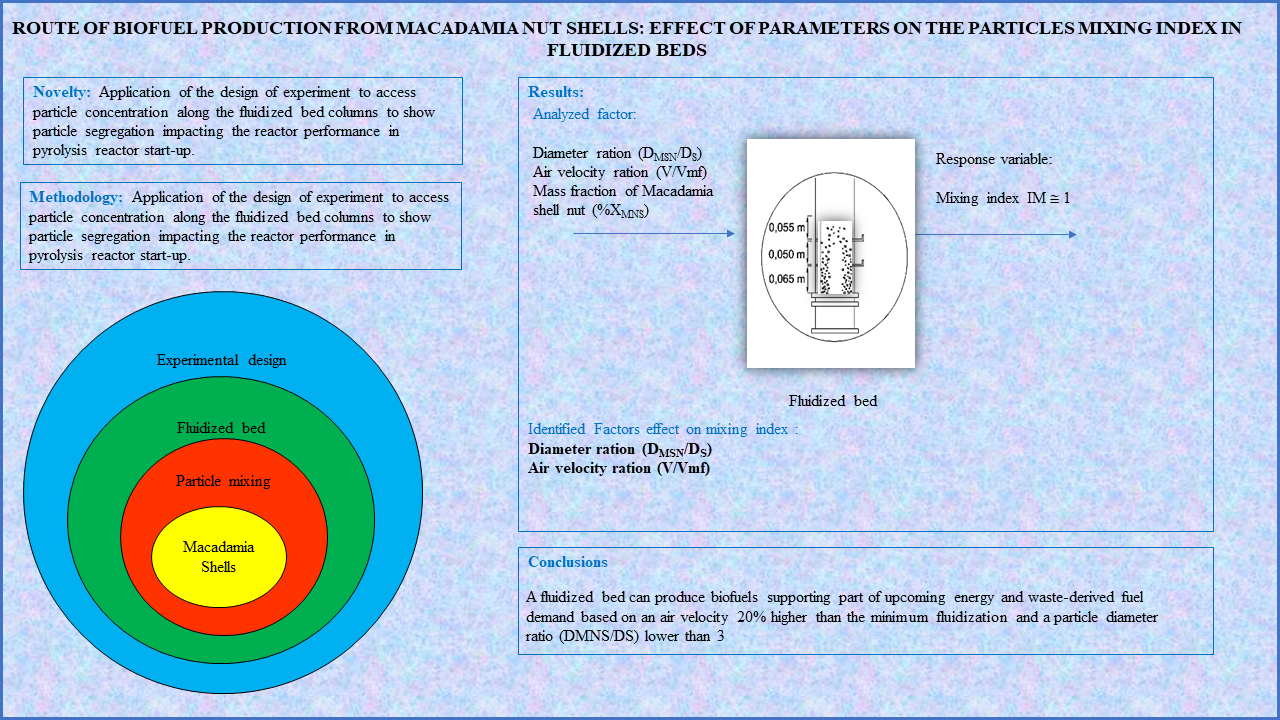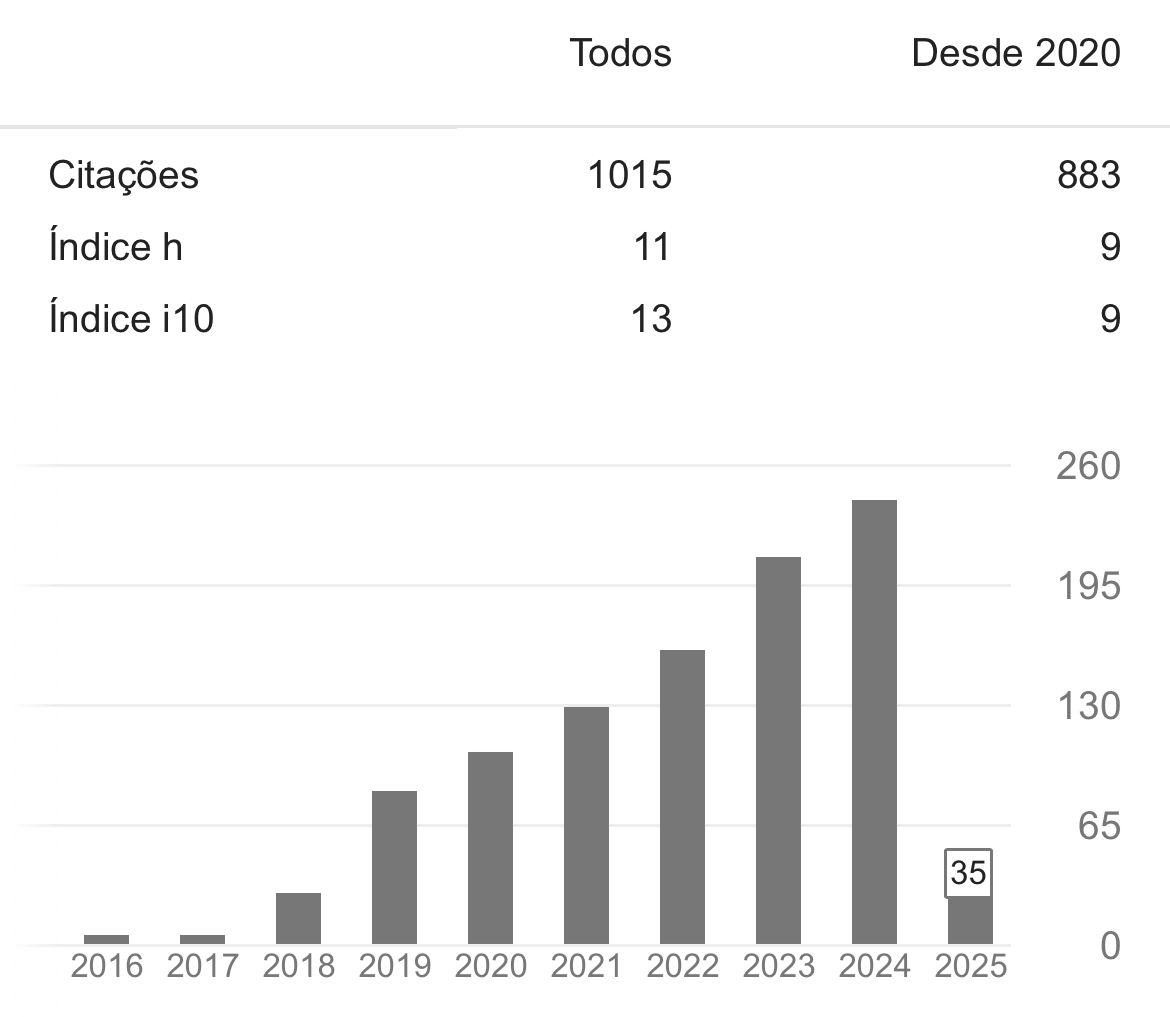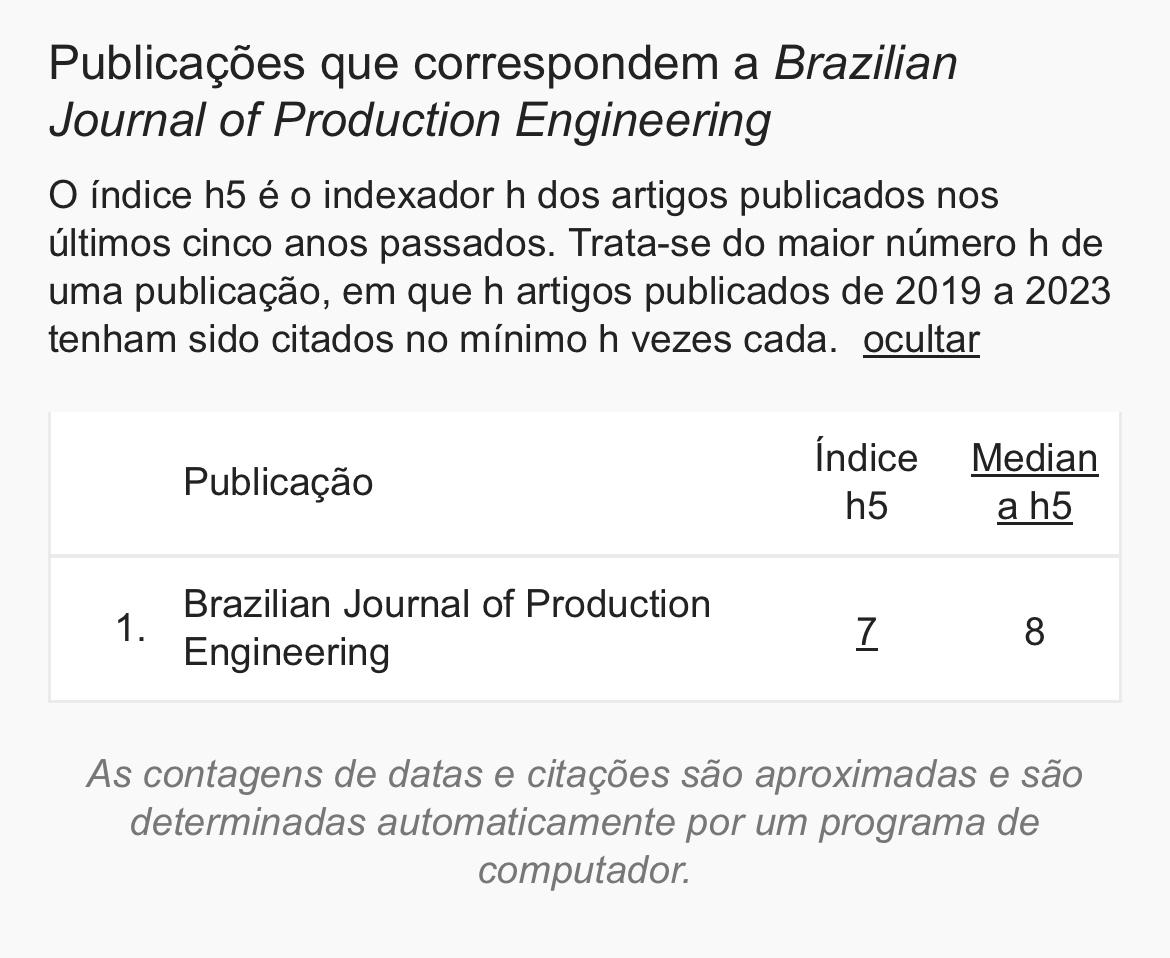Route of biofuel production from macadamia nut shells: effect of parameters on the particles mixing index in fluidized beds
DOI:
https://doi.org/10.47456/bjpe.v9i1.40123Palavras-chave:
Biomassa, Fluidodinâmica, Energia, Segregação, SustentabilidadeResumo
Pyrolysis of macadamia nut shells (MNS) in a fluidized bed reactor has excellent potential to produce bio-oil. High heat transfer rates and uniform temperature in the fluidized bed can be achieved due to effective gas-solid contact in the reactor. However, binary mixtures can lead to the segregation of particles, which negatively affects heat and mass transfer in such a reactor. Therefore, a 2³ statistical experimental design was used to assess the effects of parameters (i.e., air velocity, particle diameter ratio, and mass fraction of MNS) on the mixing index of the bed of MNS and sand. Among the analyzed factors, only DMNS/DS and V/VMF influenced the mixing index (Im) within a confidence interval of 95%. Based on statistical data analysis, an air velocity 20% above the minimum fluidization and particle diameter ratio (DMNS/DS) smaller than 3 results in uniform particle mixing in the bed (i.e., reaching ideal mixing index values). Moreover, the experimental results indicate that fluidized be used for biofuel production from Macadamia nut Shells.
Downloads
Referências
Artetxe, M., Lopez, G., Amutio, M., Elordi, G., Olazar, M., & Bilbao, J. (2010). Operating Conditions for the Pyrolysis of Poly-(ethylene terephthalate) in a Conical Spouted-Bed Reactor. Industrial & Engineering Chemistry Research, 49(5), 2064–2069. https://doi.org/10.1021/ie900557c DOI: https://doi.org/10.1021/ie900557c
Bacelos, M. S., & Freire, J. T. (2006). Stability of spouting regimes in conical spouted beds with inert particle mixtures. Industrial and Engineering Chemistry Research, 45(2). https://doi.org/10.1021/ie050633s DOI: https://doi.org/10.1021/ie050633s
Barcelos, K. M., Almeida, P. S., Araujo, M. S., Xavier, T. P., Santos, K. G., Bacelos, M. S., & Lira, T. S. (2020). Particle segregation in spouted bed pyrolysis reactor: Sand-coconut shell and sand-cocoa shell mixtures. Biomass and Bioenergy, 138, 105592. https://doi.org/10.1016/j.biombioe.2020.105592 DOI: https://doi.org/10.1016/j.biombioe.2020.105592
Daleffe, R. V., & Freire, J. T. (2004). Analysis of the fluid-dynamic behavior of fluidized and vibrofluidized bed containing glycerol. Brazilian Journal of Chemical Engineering, 21(1), 35–46. https://doi.org/10.1590/S0104-66322004000100005 DOI: https://doi.org/10.1590/S0104-66322004000100005
Freitas, T. M., Arrieche, L. S., Ribeiro, D. C., Gidaspow, D., & Bacelos, M. S. (2017). CFD analysis of fluidized beds using wastes from post-consumer carton packaging. Chemical Engineering and Processing: Process Intensification, 111, 89–100. https://doi.org/10.1016/j.cep.2016.12.002 DOI: https://doi.org/10.1016/j.cep.2016.12.002
Gong, Y., & Pegg, R. B. (2015). Tree nut oils: Properties and processing for use in food. Specialty Oils and Fats in Food and Nutrition: Properties, Processing and Applications, 65–86. https://doi.org/10.1016/B978-1-78242-376-8.00003-X DOI: https://doi.org/10.1016/B978-1-78242-376-8.00003-X
Hasan, M. M., Rasul, M. G., Jahirul, M. I., & Khan, M. M. K. (2022). Modeling and process simulation of waste macadamia nutshell pyrolysis using Aspen Plus software. Energy Reports, 8, 429–437. https://doi.org/10.1016/J.EGYR.2022.10.323 DOI: https://doi.org/10.1016/j.egyr.2022.10.323
Hidaka, N., Onitani, M., Matsumoto, T., & Shigeharu, M. (1995). Inverted segregation of binary particles in gas-liquid-solid fluidized bed. Powder Technology, 84, 157–163. DOI: https://doi.org/10.1016/0032-5910(95)02988-E
Iannello, S., Bond, Z., Sebastiani, A., Errigo, M., & Materazzi, M. (2023). Axial segregation behaviour of a reacting biomass particle in fluidized bed reactors: experimental results and model validation. Fuel, 338, 127234. https://doi.org/10.1016/J.FUEL.2022.127234 DOI: https://doi.org/10.1016/j.fuel.2022.127234
Ji, X., Bie, R., Chen, P., & Gu, W. (2016). Reed Black Liquor Combustion in Fluidized Bed for Direct Causticization with Limestone as Bed Material. Energy and Fuels, 30(7), 5791–5798. https://doi.org/10.1021/ACS.ENERGYFUELS.6B00847 DOI: https://doi.org/10.1021/acs.energyfuels.6b00847
José, M. J. S., Olazar, M., Peñas, F. J., & Bilbao, J. (1994a). Segregation in Conical Spouted Beds with Binary and Ternary Mixtures of Equidensity Spherical Particles. 1838–1844. https://doi.org/10.1021/ie00031a025
José, M. J. S., Olazar, M., Peñas, F. J., & Bilbao, J. (1994b). Segregation in Conical Spouted Beds with Binary and Ternary Mixtures of Equidensity Spherical Particles. 1838–1844. https://doi.org/10.1021/ie00031a025 DOI: https://doi.org/10.1021/ie00031a025
Lee, J., Kim, S., You, S., & Park, Y. K. (2023). Bioenergy generation from thermochemical conversion of lignocellulosic biomass-based integrated renewable energy systems. Renewable and Sustainable Energy Reviews, 178, 113240. https://doi.org/10.1016/J.RSER.2023.113240 DOI: https://doi.org/10.1016/j.rser.2023.113240
Lopez, G., Artetxe, M., Amutio, M., Bilbao, J., & Olazar, M. (2017). Thermochemical routes for the valorization of waste polyolefinic plastics to produce fuels and chemicals. A review. In Renewable and Sustainable Energy Reviews, 73, 346–368. Elsevier Ltd. https://doi.org/10.1016/j.rser.2017.01.142 DOI: https://doi.org/10.1016/j.rser.2017.01.142
López, G., Olazar, M., Aguado, R., & Bilbao, J. (2010). Continuous pyrolysis of waste tyres in a conical spouted bed reactor. Fuel, 89(8), 1946-1952. https://doi.org/10.1016/J.FUEL.2010.03.029 DOI: https://doi.org/10.1016/j.fuel.2010.03.029
Mantegazini, D. Z., Neves, F. L., Xavier, T. P., & Bacelos, M. S. (2021). Review on advanced technologies for aluminum recovery from carton packages waste using pyrolysis. Brazilian Journal of Production Engineering-BJPE, 7(1), 117–129. https://doi.org/10.47456/bjpe.v7i1.34583 DOI: https://doi.org/10.47456/bjpe.v7i1.34583
Marques, I. I. D. R., & Bacelos, M. S. (2013). Analysis of conical spouted bed fluid dynamics using carton mixtures. Chemical Engineering and Processing: Process Intensification, 70, 37–47. https://doi.org/10.1016/j.cep.2013.05.009 DOI: https://doi.org/10.1016/j.cep.2013.05.009
Martinez Castilla, G., Larsson, A., Lundberg, L., Johnsson, F., & Pallarès, D. (2020). A novel experimental method for determining lateral mixing of solids in fluidized beds – Quantification of the splash-zone contribution. Powder Technology, 370, 96–103. https://doi.org/10.1016/J.POWTEC.2020.05.036 DOI: https://doi.org/10.1016/j.powtec.2020.05.036
Massaro Sousa, L., & Ferreira, M. C. (2020). On the performance of a spouted bed type device for feeding spent coffee grounds to a circulating fluidized bed reactor. Chemical Engineering Research and Design, 160, 31–38. https://doi.org/10.1016/J.CHERD.2020.05.002 DOI: https://doi.org/10.1016/j.cherd.2020.05.002
Melo, J. L. Z., Bacelos, M. S., Pereira, F. A. R., Lira, T. S., & Gidaspow, D. (2016). CFD modeling of conical spouted beds for processing LDPE/Al composite. Chemical Engineering and Processing: Process Intensification, 108, 93–108. https://doi.org/10.1016/j.cep.2016.07.011 DOI: https://doi.org/10.1016/j.cep.2016.07.011
Norouzi, H. R., Mostoufi, N., & Sotudeh-Gharebagh, R. (2012). Effect of fines on segregation of binary mixtures in gas-solid fluidized beds. Powder Technology, 225, 7–20. https://doi.org/10.1016/j.powtec.2012.03.025 DOI: https://doi.org/10.1016/j.powtec.2012.03.025
Nunes, C. A., Freitas, M. P., Pinheiro, A. C. M., & Bastos, S. C. (2012). Chemoface: a novel free user-friendly interface for chemometrics. Journal of the Brazilian Chemical Society, 23(11), 2003–2010. https://doi.org/10.1590/S0103-50532012005000073 DOI: https://doi.org/10.1590/S0103-50532012005000073
Parikh, J., Channiwala, S. A., & Ghosal, G. K. (2005). A correlation for calculating HHV from proximate analysis of solid fuels. Fuel, 84(5), 487–494. https://doi.org/10.1016/J.FUEL.2004.10.010 DOI: https://doi.org/10.1016/j.fuel.2004.10.010
Saidi, M., Basirat Tabrizi, H., Chaichi, S., & Dehghani, M. (2014). Pulsating flow effect on the segregation of binary particles in a gas-solid fluidized bed. Powder Technology, 264, 570–576. https://doi.org/10.1016/j.powtec.2014.06.003 DOI: https://doi.org/10.1016/j.powtec.2014.06.003
Samoraj, M., Izydorczyk, G., Krawiec, P., Moustakas, K., & Chojnacka, K. (2022). Biomass-based micronutrient fertilizers and biofortification of raspberries fruits. Environmental Research, 215, 114304. https://doi.org/10.1016/J.ENVRES.2022.114304 DOI: https://doi.org/10.1016/j.envres.2022.114304
Selvatici, A. C., Mantegazini, D. Z., & Bacelos, M. S. (2021). Produção de combustível a partir de resíduos de embalagens tetra pak em leito fluidizado: identificação de fatores que afetam a mistura de partículas de areia e compósito PEBD/AL. Brazilian Journal of Production Engineering, 7(5), 133–144. https://doi.org/10.47456/BJPE.V7I5.36926 DOI: https://doi.org/10.47456/bjpe.v7i5.36926
Soria-Verdugo, A., Cano-Pleite, E., Passalacqua, A., & Fox, R. O. (2023a). Effect of particle shape on biomass pyrolysis in a bubbling fluidized bed. Fuel, 339, 127365. https://doi.org/10.1016/J.FUEL.2022.127365
Soria-Verdugo, A., Cano-Pleite, E., Passalacqua, A., & Fox, R. O. (2023b). Effect of particle shape on biomass pyrolysis in a bubbling fluidized bed. Fuel, 339. https://doi.org/10.1016/j.fuel.2022.127365 DOI: https://doi.org/10.1016/j.fuel.2022.127365
Soria-Verdugo, A., Rubio-Rubio, M., Goos, E., & Riedel, U. (2020). On the characteristic heating and pyrolysis time of thermally small biomass particles in a bubbling fluidized bed reactor. Renewable Energy, 160, 312–322. https://doi.org/10.1016/j.renene.2020.07.008 DOI: https://doi.org/10.1016/j.renene.2020.07.008
Strezov, V., Patterson, M., Zymla, V., Fisher, K., Evans, T. J., & Nelson, P. F. (2007). Fundamental aspects of biomass carbonisation. Journal of Analytical and Applied Pyrolysis, 79(1–2), 91–100. https://doi.org/10.1016/J.JAAP.2006.10.014 DOI: https://doi.org/10.1016/j.jaap.2006.10.014
Tchoffor, P. A., Davidsson, K. O., & Thunman, H. (2015). Production of Activated Carbon within the Dual Fluidized Bed Gasification Process. Industrial and Engineering Chemistry Research, 54(15), 3761–3766. https://doi.org/10.1021/IE504291C DOI: https://doi.org/10.1021/ie504291c
Tran, Q. K., Han, S., Ly, H. V., Kim, S. S., & Kim, J. (2020). Hydrodeoxygenation of a bio-oil model compound derived from woody biomass using spray-pyrolysis-derived spherical γ-Al2O3-SiO2 catalysts. Journal of Industrial and Engineering Chemistry, 92, 243–251. https://doi.org/10.1016/J.JIEC.2020.09.012 DOI: https://doi.org/10.1016/j.jiec.2020.09.012
Wang, S., Hu, C., Luo, K., Yu, J., & Fan, J. (2022). Multi-scale numerical simulation of fluidized beds: Model applicability assessment. Particuology. https://doi.org/10.1016/J.PARTIC.2022.11.011 DOI: https://doi.org/10.1016/j.partic.2022.11.011
Wang, S., & Shen, Y. (2021). Particle-scale study of heat and mass transfer in a bubbling fluidised bed. Chemical Engineering Science, 240, 116655. https://doi.org/10.1016/J.CES.2021.116655 DOI: https://doi.org/10.1016/j.ces.2021.116655
Xavier, T. P., Libardi, B. P., Lira, T. S., & Barrozo, M. A. S. (2016). Fluid dynamic analysis for pyrolysis of macadamia shell in a conical spouted bed. Powder Technology, 299, 210–216. https://doi.org/10.1016/J.POWTEC.2016.05.034 DOI: https://doi.org/10.1016/j.powtec.2016.05.034
Yang, C., Kwon, H., Bang, B., Jeong, S., & Lee, U. (2022). Role of biomass as low-carbon energy source in the era of net zero emissions. Fuel, 328, 125206. https://doi.org/10.1016/J.FUEL.2022.125206 DOI: https://doi.org/10.1016/j.fuel.2022.125206
Zhou, M., Wang, S., Luo, K., & Fan, J. (2022). Three-dimensional modeling study of the oxy-fuel co-firing of coal and biomass in a bubbling fluidized bed. Energy, 247, 123496. https://doi.org/10.1016/J.ENERGY.2022.123496 DOI: https://doi.org/10.1016/j.energy.2022.123496

Downloads
Publicado
Como Citar
Edição
Seção
Licença
Copyright (c) 2023 Brazilian Journal of Production Engineering

Este trabalho está licenciado sob uma licença Creative Commons Attribution-NonCommercial-ShareAlike 4.0 International License.

Atribuição 4.0 internacional CC BY 4.0 Deed
Esta licença permite que outros remixem, adaptem e desenvolvam seu trabalho não comercialmente, contanto que eles creditem a você e licenciem suas novas criações sob os mesmos termos.
















































































